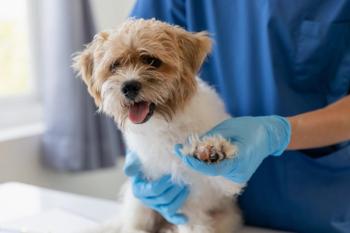
Veterinary economy may be bouncing back
The 2015 numbers are encouragingespecially those second-quarter figuresbut now is not the time to rest, experts say.
Getty ImagesYear-to-year, 2015 is posting much better numbers for veterinarians than the previous few years. Business is up 6 percent to 8 percent across the board, industry consultants report.
“Without a doubt, the industry is seeing an upswing,” says Tom McFerson, CPA, ABV, principal of Gatto McFerson CPAs in Santa Monica, California. Gatto McFerson surveys 175 California practices each month on revenue issues and have done so since 2008. These numbers make the situation clear. From August 2014 to August 2015, practice revenues are up 8 to 10 percent.
Those numbers jibe with what Veterinary Economics Editorial Advisory Board member Gary Glassman, CPA, of Burzenski & Co. P.C. in East Haven, Connecticut, has found. Glassman reports revenue increases of 6 percent total from year to year in the Southeast corner of the United States. Services sales are up 6.9 percent, and product sales have risen 4.9 percent. His firm also reports a jump in new client numbers.
Gary Glassman“The change in invoice numbers and new clients is the biggest I've seen in a while,” Glassman says. “We saw this uptick in business start about 12 months ago, with the second quarter of 2015 being the best yet.”
Glassman also reports that a survey his firm conducted of 85 hospitals across the nation shows an average increase in revenue of 8.7 percent for services in 2015, with practices doing 9.4 percent in total sales from April to June of this year. “These numbers indicates pretty strong growth for veterinary practices,” Glassman says.
Dr. Rexanne StrueveVeterinary Associates of Manning in Manning, Iowa, a small-town mixed-animal practice, bears those numbers out. The practice, owned by Rexanne Strueve, DVM, has seen a revenue increase of up to 8 percent year over year. Strueve says her practice hasn't hit these revenue increases every month over the same month the previous year, but on average each quarter things are looking up. “The overall economy has improved some, certainly, but we have had to work hard internally to make these numbers happen,” Strueve says. “Offering more payment options as well as new treatments has helped our rural practice thrive.”
Dr. Tanya M. ten BroekeTanya M. ten Broeke, DVM, owner of Gladstone Veterinary Clinic in Milwaukee, Oregon, indicates an improving economy as well. “Our business is definitely better than it was during the recession,” ten Broeke says. “It certainly seems like our clients are more willing and able to do the diagnostics we recommend and to provide the care their pets need than they have been in recent years.”
What's behind the change?
Tom McFersonIf your practice is on the rise as well, don't pat yourself on the back too hard. Experts say these changes have a lot to do with the general improvement in the economy as well as what practice's are doing personally. “Certain practices are doing things that help, but overall the real estate market is doing better, the stock market has improved, unemployment is down,” McFerson says. “Most veterinary practices are still a bit behind where they were before the crash, but the future is definitely looking up. Appointment books are fuller, invoices are higher, but now's not the time to get comfortable.”
Glassman says the improvement is anything but industry-based. Overall, you can expect 7 to 9 percent growth in any business this year, with mature businesses posting 4 percent to 5 percent growth on average, he says.
This is all great news. But Glassman agrees that now is not the time to coast. “Don't sit back and think these changes that are producing good results is a function of what's been done internally,” he says. Glassman says veterinary hospitals must go back to business fundamentals to maintain and move forward.
Ten Broeke knows the economy won't fix it all. For her part, her practice is focusing on many factors to keep business growing. “We are working on training a team that's on the same page, that can talk to clients about the benefits of doing certain diagnostics and treatments,” she says. “If clients don't know the options, they can't go for them. It starts and ends with the well-trained team.”
Strueve echoes those sentiments. She attributes much of her practice success with a vigorous focus on internal marketing, teamwork and other strategies that draw in business. Also, offering more payment options and pet health insurance has carried the practice through difficult financial times. “Our business is increasing, even during the hard times, while not taking on more accounts receivable and not extending credit to clients,” she says. “We're always looking for new ways to help clients pay for the services their pets need, and we're working together as a team to offer the best care possible.”
Glassman says that's exactly what practices need to be doing now-and in the future, no matter what the economy brings. “Stay vigilant; you can't sit back on your laurels and expect that the improving economy will take care of your business needs,” he says. “It certainly helps, but you have to maintain that relationship and give the best quality of care to really make a difference. The economy furthers what you can do, making that ‘yes' proposition even easier, but there's never a time to get too comfortable.”
Sarah A. Moser is a freelance writer and editor in Lenexa, Kansas.
Newsletter
From exam room tips to practice management insights, get trusted veterinary news delivered straight to your inbox—subscribe to dvm360.






